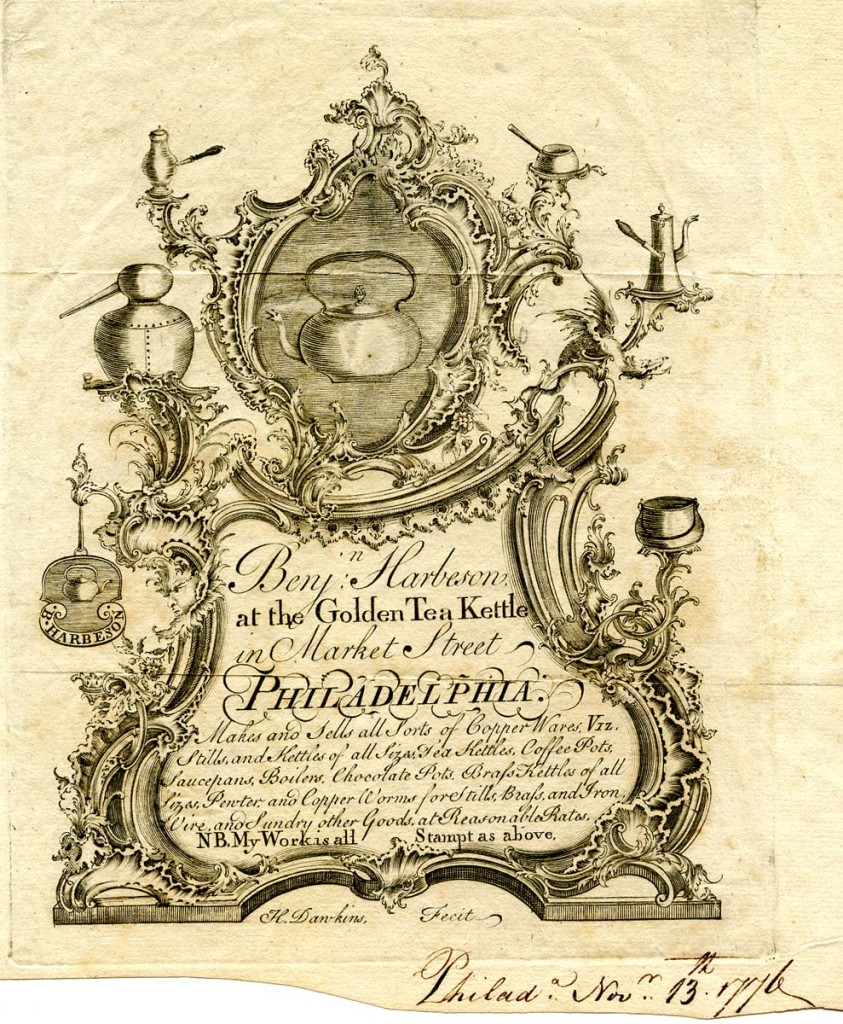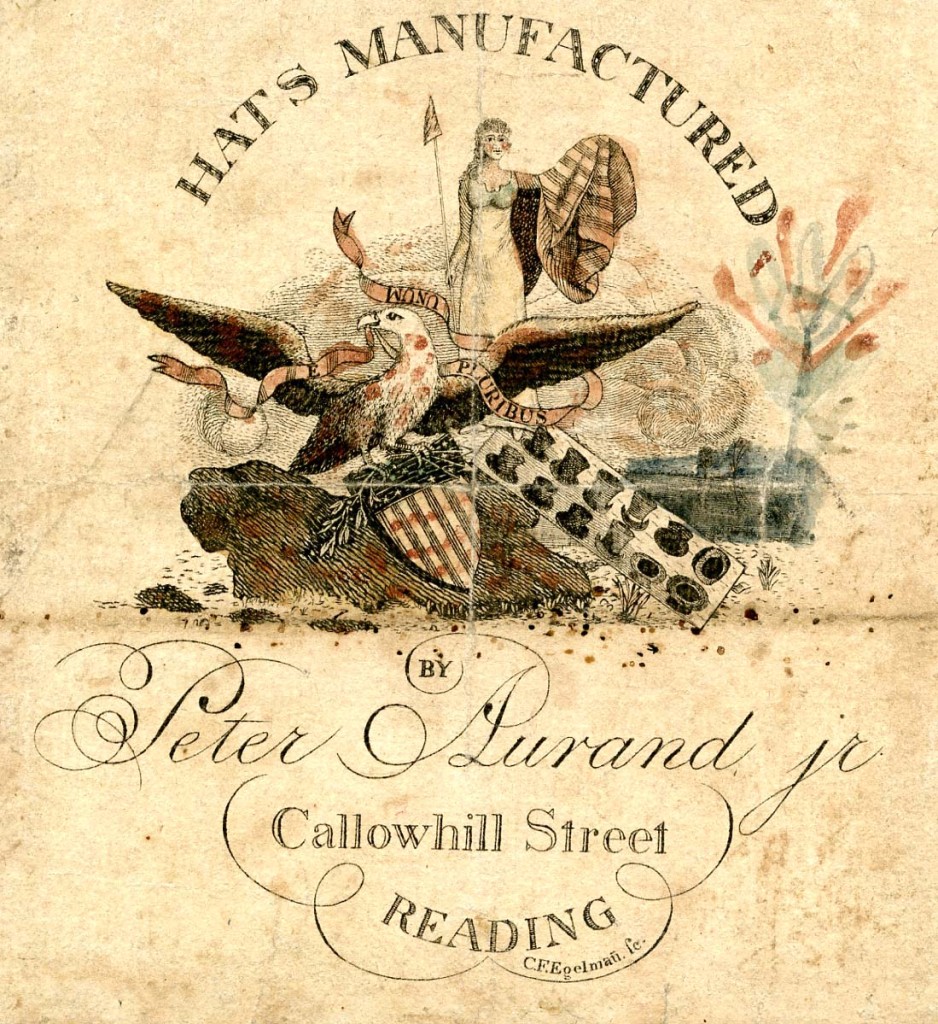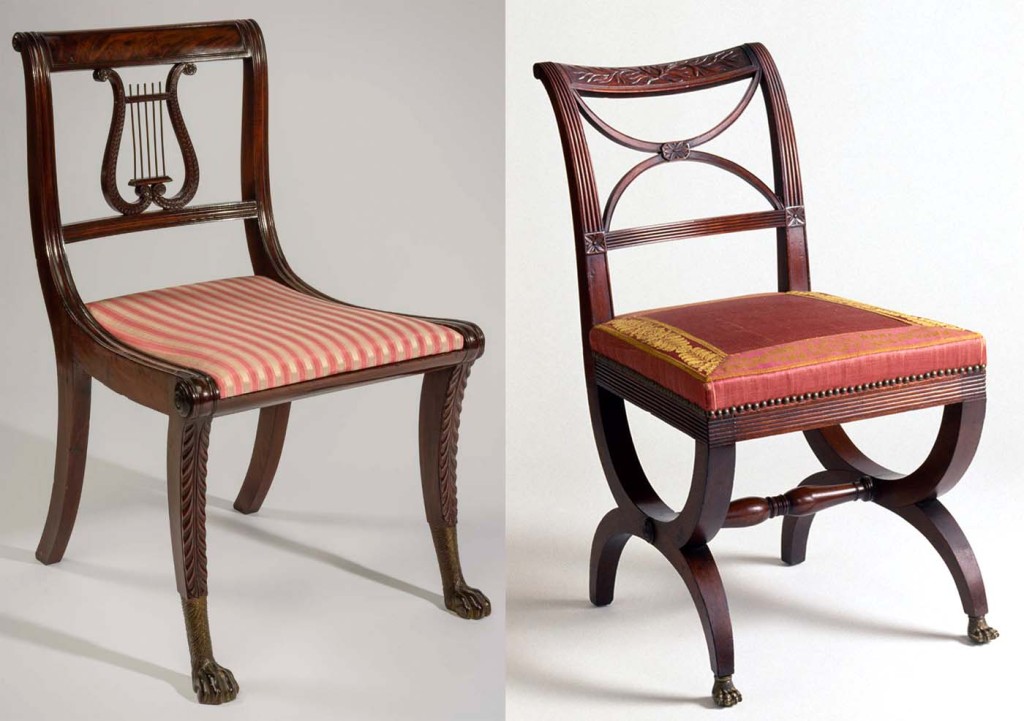The Personal Touch
In early America, craftsmen usually interacted directly with their customers, who in turn knew the person they were buying from. Craftsmen advertised locally and recorded their own sales. Their business records, such as account books and invoices, not only list purchases and prices but also shed light on social networks, buying practices, and barter economies.
The use of trade cards and labels, an early form of advertising, originated in England in the 1600s and then spread to the colonies. Cards and labels were distributed to people on the street, given out with items sold, glued onto furniture, and sometimes used as bills and receipts. The illustrations alone tell us much about the period in which they were created.
Benjamin Harbeson trade label
Engraved by H. Dawkins
Philadelphia, Pennsylvania; 1776
Copperplate engraving and iron gall ink
65×708 Downs Collection, gift of Henry Francis du Pont
Kneeland & Adams trade label
Printed by Elisha Babcock
Hartford, Connecticut; 1793
Copperplate engraving
67×93 Downs Collection, gift of the Friends of Winterthur
Peter Durand Jr. trade card
Engraved by C. E. Egelman
Reading, Pennsylvania; about 1815
Watercolor and engraving
64×53 Downs Collection, gift of the Friends of Winterthur
 Raphaelle and Rembrandt Peale trade label
Raphaelle and Rembrandt Peale trade label
Engraved by E. Trenchard
Philadelphia, Pennsylvania; 1793–96
Watercolor and engraving
71×249 Downs Collection, gift of the Friends of Winterthur
Eleuthera du Pont Smith
Painted by Rembrandt Peale
Philadelphia, Pennsylvania; 1830–31
Oil on canvas
1967.0277 Gift of John Irving Woodriff
In the early stages of their professional careers, American painters Raphaelle and Rembrandt Peale advertised with the hand-painted trade label seen here. By 1831, when Rembrandt painted Eleuthera du Pont (sister of Evelina du Pont Bidermann, the first owner of Winterthur), he had enjoyed a long and successful career.
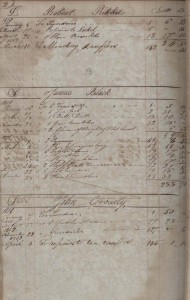
 Samuel Williamson ledger
Samuel Williamson ledger
Philadelphia, Pennsylvania; 1810–13
Iron gall ink
89×35.2a Downs Collection, gift of the Friends of Winterthur
Tablespoon
Made by Samuel Williamson
Philadelphia, Pennsylvania; 1794–1813
Silver
1962.0240.1580.001 Gift of Mr. & Mrs. Alfred Bissell
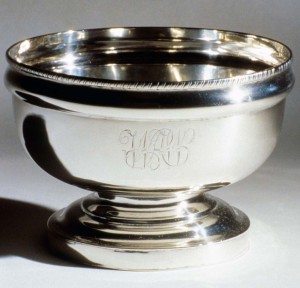 Waste bowl
Waste bowl
Made by Samuel Williamson
Philadelphia, Pennsylvania; 1800–1813
Silver
1978.0158 Gift of an anonymous donor
Between 1794 and 1813 in Philadelphia, Samuel Williamson crafted silver objects such as this waste bowl and tablespoon. In his ledger, he recorded information about making, mending, and selling his silverwork, training craftsmen, and importing plated silver from England.
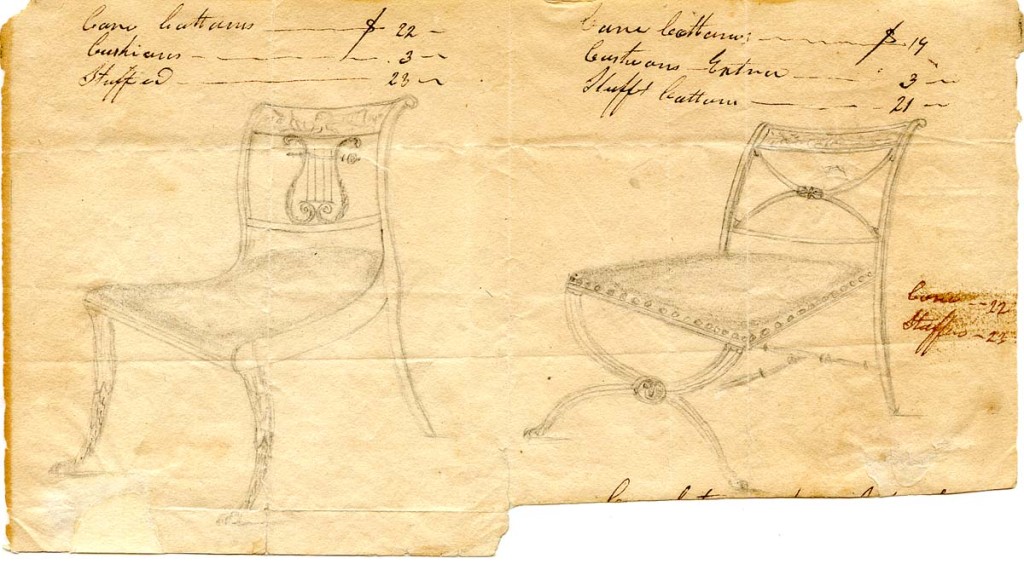 Side chair
Side chair
Attributed to Duncan Phyfe
New York, New York; 1810–20
Mahogany
1957.0716.002 Bequest of Henry Francis du Pont
Side chair
Attributed to Duncan Phyfe
New York, New York; 1810–15
 Mahogany, white pine, maple, beech, silk upholstery
Mahogany, white pine, maple, beech, silk upholstery
1964.0024.001 Museum purchase with funds provided by the Charles K. Davis Fund
Drawing of chairs
Attributed to Duncan Phyfe
New York, New York; 1815–16
Iron gall ink and graphite
56×6.4 Downs Collection, gift of the Friends of Winterthur
Invoice for furniture
From Duncan Phyfe to Charles N. Bancker
New York, New York; 1816
Iron gall ink
 56×6.3 Downs Collection, gift of the Friends of Winterthur
56×6.3 Downs Collection, gift of the Friends of Winterthur
The New-York Revised Prices for Manufacturing Cabinet and Chair Work (inside front cover and title page shown)
Printed by Southwick and Pelsue
New York, New York; 1810
NK2406 N53a Printed Book and Periodical Collection, gift of Henry Francis du Pont
Lyre-back chairs were fashionable in the early 1800s, while chairs with Grecian cross legs were rare. The two chairs seen here are attributed to Duncan Phyfe. They display exquisite and innovative craftsmanship that could only have come from such an experienced furnituremaker. In addition, Phyfe sent an invoice for furniture as well as a drawing of similar chairs to a Philadelphia client, providing further evidence that he made the pieces seen here. He most likely priced the chair seats using his personal copy of a New York pricebook for cabinetmakers.
Related Themes:
- Revealing the Market: Advertising and Distribution
- The Middlemen: Traveling Salesmen and Merchants
- The Rise of Big Industry

